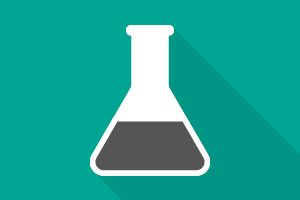ChemMatters Teaching Resources
Filter by:
19 Classroom Resources
-

Activity | Chemical Change, History, Interdisciplinary | High School, Middle School
Tie Dye
In this activity, students make tie-dye shirts and complete a worksheet about a reading from ChemMatters about how dyes work. It gives students the opportunity to apply chemistry to everyday life.
-

Demonstration | Chemical Change, Chemical Change, Combustion, Density, Density, Kinetic Molecular Theory | High School
Liquid and Gas Burning Comparison
In this demo, students will witness the burning of a substance in its gas and in its liquid states. They will carry out the demonstrations themselves, and compare the results of the two reactions.
-

Lab | Chemical Change, Chemical Change, Observations | High School, Middle School
Corrosion in Motion
In this lab, students will expose metal samples to various solutions and observe the amount of corrosion of a period of time.
-

Lab | Chemical Change, Chemical Change, Lewis Structures, Molecular Structure, Observations, Physical Change, Polarity | High School
DIY Triiodide
In this lab, students will investigate how iodine interacts with various substances. They will use color changes to justify whether a chemical or physical change is taking place. This activity is referenced in the October 2019 ChemMatters article called “Cash, Chemistry, and Counterfeiting.”
-

Lab | Accuracy, Accuracy, Density, Dimensional Analysis, Error Analysis, Error Analysis, Interdisciplinary, Introduction, Measurements, Scientific Notation, Significant Figures | High School
Math and Measurement
In this lab, students will practice introductory math skills that will be used in chemistry all year. This includes metric conversion, significant figures, scientific notation, dimensional analysis, density, percent error, accuracy and precision, as well as using lab equipment.
-

Lesson Plan | Functional Groups, Molecular Formula, Molecular Structure, Molecular Structure , Oxidation, Saturated vs. Unsaturated | High School
Chocolate: The New Health Food
Explore emergency lesson plans from ChemMatters magazine.
-

Lesson Plan | Concentration, Solute & Solvent | High School, Middle School
Diffusion and Osmosis
In this lesson, students will build upon their understanding of solutions and concentration. They will observe the diffusion of food coloring dye in water and then perform an experiment focused on how solutions of different concentrations will affect the movement of water across a semi-permeable membrane.
-

Lesson Plan | Chemical Properties, Lab Safety, Physical Properties | High School, Middle School
Lab Safety and Safety Data Sheets (SDS)
In this lesson, students will identify various safe lab practices with a focus on the importance of labeling and knowing the background safety information for all reagents used in a lab. Students will design a series of tests to determine the identity of an unknown substance using properties found on safety data sheets.
-

Lesson Plan | Mixtures | High School, Middle School
Making Sense of Milk
In this lesson, students will compare and contrast the chemical compositions of different types of plant milk and animal milk by analyzing data and developing models.
-

Lesson Plan | Intermolecular Forces, Molecular Structure, Physical Properties | High School, Middle School
Structure Matters
In this lesson, students will explore the atomic level structure of various elements and compounds to determine how arrangement of atoms at the microscopic level affects macroscopic material properties.
-

Lesson Plan | Electromagnetic Spectrum, Experimental Design, Graphing, Heat, Interdisciplinary, Radiation, Temperature | High School, Middle School
The Ozone Layer
In this lesson, students will develop an explanation for the consequences of ozone depletion on Earth by planning and carrying out an investigation. Students will use analysis and interpretation of data to develop a model to explain the cause and effect of Ozone depletion on the planet Earth.
-

Project | Measurements, Molecular Formula, Molecular Structure, Molecular Structure , Saturated vs. Unsaturated, Significant Figures | High School, Middle School
Discovering Chemical Elements in Food
In this project, students will analyze nutrition labels of some of the foods and drinks that they recently consumed. They will identify which type of macromolecule (carbohydrates, lipids, proteins) is mainly supplied by the item and they will compare their consumption with the daily recommended intake for that type of macromolecule. Students will also investigate salt and added sugar as well as vitamins and minerals in the item. Finally, students will present their findings through short, spoken messages that are recorded and presented through a QR code. These can become a source of information for the school community at large upon completion of the project.
-

Lab | Functional Groups, Intermolecular Forces, Molecular Structure, Molecular Structure , Polarity | High School
The Chemistry of Hand Sanitizer and Soap
In this lab, students will model the interaction between hand sanitizer particles and virus particles, as well as between soap particles and virus particles. They will apply their understanding of molecular structure and intermolecular forces to analyze their observations and behavior of the particles, in order to gain a better understanding of how soaps and sanitizers work.
-

Lesson Plan | Chemical Change, Chemical Change, pH, Reaction Rate | High School
Cheesy Science Emergency Lesson
In this lesson, students will learn about pH, acids, bases, enzymes, and chemical reactions through reading the highly rated ChemMatters article, Cheesy Science. The lesson includes several activities to help promote literacy in the science classroom related to the reading. This lesson could be easily used as an emergency lesson plan for a substitute teacher, as most of the activities are self-guided.
-

Lesson Plan | Elements, Interdisciplinary, Photosynthesis | High School
Growing Green on the Red Planet Emergency Lesson
In this lesson, students will learn about elements, compounds, and chemical reactions through reading the highly rated ChemMatters article, Growing Green on the Red Planet. The lesson includes several activities to help promote literacy in the science classroom related to the reading. This lesson could be easily used as an emergency lesson plan for a substitute teacher, as most of the activities are self-guided.
-

Lesson Plan | Atomic Spectra, Electrons, Gas Laws, Pressure, Redox Reaction, Temperature, Volume | High School
Fireworks Emergency Lesson
In this lesson, students will learn about electron structure, spectroscopy, gas laws, redox reactions, thermochemistry, and safety through reading the highly rated ChemMatters article, Fireworks! The lesson includes several activities to help promote literacy in the science classroom related to the reading. This lesson could be easily used as an emergency lesson plan for a substitute teacher, as most of the activities are self-guided.
-

Lesson Plan | Chemical Properties, Elements, History, Model of the Atom, Periodic Table, Subatomic Particles, Valence Electrons | High School
The Periodic Table Turns 150 Emergency Lesson
In this lesson, students will learn about elements, the history and organization of the periodic table, as well as the scientists who contributed to the development of the periodic table through reading the highly rated ChemMatters article, The Periodic Table Turns 150. The lesson includes several activities to help promote literacy in the science classroom related to the reading. This lesson could be easily used as an emergency lesson plan for a substitute teacher, as most of the activities are self-guided.
-

Lesson Plan | Chemical Change, Combustion, Heat, Law of Conservation of Energy, Temperature | High School
Cow Power! Emergency Lesson
In this lesson, students will learn about energy, renewable energy, greenhouse gases, and chemical reactions through reading the highly rated ChemMatters article, Cow Power. The lesson includes several activities to help promote literacy in the science classroom related to the reading. This lesson could be easily used as an emergency lesson plan for a substitute teacher, as most of the activities are self-guided.
-

Lesson Plan | Establishing Equilibrium, pH, Temperature | High School
Acidic Seas Emergency Lesson
In this lesson, students will learn about the pH scale, weak acids, gases, equilibrium, and climate change through reading the highly rated ChemMatters article, Acidic Seas: How Carbon Dioxide is Changing the Oceans. The lesson includes several activities to help promote literacy in the science classroom related to the reading. This lesson could be easily used as an emergency lesson plan for a substitute teacher, as most of the activities are self-guided.